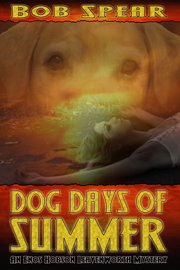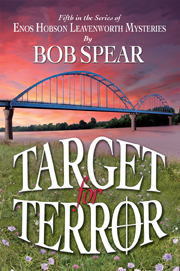Here is the final segment of my interview with screenwriter and independent filmmaker Shannon L. Arrant. She provides some critical information and links for your consideration.
A writer just finished her screenplay. What should her next steps be?
Registering [the] script should be [the] first priority. It can be registered with either the WGA (www.wga.org) or the Library of Congress (www.copyright.gov). Each offers different prices and different benefits for registering so choose whichever one appeals to you the most.
Once your script is registered, give it to anyone and everyone who is willing to give you an honest critique of it. Websites like Zoetrope (www.zoetrope.com) are filled with screenwriters who will review your work in exchange for you reviewing theirs.
Don’t give it to just fellow screenwriters, though. Give it to your family, friends, coworkers; pretty much anyone you can think of. If people that aren’t associated directly with the film industry find it entertaining to read, they should find it entertaining to watch, too.
Once you get their reviews, don’t feel like you need to make all of the changes suggested to you but don’t flat out ignore their comments, either. Use the suggestions that will ultimately improve your script and discard the rest.
How do you know which ones those are? This is where getting as many reviews as possible comes into play. If there’s an area that a lot of people are having problems with, then work on fixing it. The rest of the suggestions you receive can be included or not, depending on whether or not you feel they’ll improve your screenplay.
A great side benefit of giving your screenplay to as many people as possible to review is it will also help you network. Networking is vital in the film industry. Even if someone isn’t directly a part of a production company, you never know who they know that is.
What are the best ways a screenwriter can network?
Aside from telling anyone and everyone you’re now a screenwriter, attending screenwriting conventions (if you can afford it), being active on websites geared towards screenwriters and production companies like IMDb pro (www.proimdb.com), entering screenwriting contests, and interning with local production companies are all great ways for a screenwriter to network.
How does someone go about locating production companies to intern with?
The best place I’ve found is your local Cragislist page. Independent production companies are always looking for people to help with their latest film. Be sure to check ‘tv/film/video’ under the jobs section and the ‘creative’, ‘crew’ and ‘talent’ sections under gigs. Because Craigslist has started charging to post job openings in certain cities, a lot of production companies are now using the gigs section to place their open calls for talent and crew.
What screenwriting contests do you recommend?
The Nicholl Fellowships in Screenwriting Competition sponsored by the Academy of Motion Picture Arts and Sciences (www.oscars.org/awards/nicholl/index.html) is by far the most prestigious screenwriting competition in the United States. If you do well in this contest, you stand a great chance of having your screenplay optioned.
The PAGE International Screenwriting Awards (www.pageawards.com) is another excellent contest to enter. It’s another of the more popular screenwriting contests out there and offers some great prizes. For an extra fee, you can also receive the judge’s notes and feedback they left while reading your screenplay. Considering the judges for the PAGE International Screenwriting Awards actively work in the film industry for production companies, this can give you invaluable insight into what other production companies think about your script.
The biggest problem with the previous two contests is that they only happen once a year. What do you do if you finish your screenplay but miss the deadline? That’s where Script Savvy (www.scriptsavvy.net) comes in! Script Savvy has a new contest each month, making it convenient to enter whenever you’re ready. The entry fee is reasonable and they offer two different levels of feedback on your screenplay. Every entrant also receives a PDF of over 400 agents and managers that are accepting new screenwriters. That alone can be well worth the cost of the entry fee.
Does a screenwriter need an agent?
No. Although, as with writing a novel, having an agent can make some things easier. They can submit your screenplay to more production companies and generally should know which companies are looking for your type of script.
How can he go about finding an agent?
Aside from getting the free PDF from Script Savvy of agents and managers if you enter their contest, IMDb Pro, other screenwriters, and a good ol’ Google search are some good ways to get that information.
What are some ways a writer can publicize her screenplay on her own?
In the internet age we live in, having a website is a must. It doesn’t have to be a website dedicated solely to your screenplay. All you really need is a place to post a synopsis, your contact info, and anything else you feel is important. Take your time to make this website as professional looking as you can. Always remember, you are selling not only your screenplay but yourself as a screenwriter. The more polished and together you are, the more likely you are to find someone interested in buying you both.
If you can afford it, film a trailer and upload it to every video hosting site you can think of. Even though you may not have any intention of producing your screenplay on your own, it’s easier for someone to invest money into producing your work if they can get a good idea of the potential of the finished product first. It could also get a lot of people interested in watching a completed film of your screenplay. The number of views alone could get someone interested in producing it for you. Whatever you do, if you go this route, don’t forget to link the video to your website!
How do you write a good query letter?
Read a lot of query letters. You can find examples of both good and bad ones through a Google search. Once you have a query letter written, give it to anyone who is willing to read it to get their reaction from it. If, after reading your query letter, they are intrigued enough to want to learn more, then you know you’re on the right track.
How does someone find production companies to send her screenplay to?
Remember how you can find an agent? It’s pretty much the same, except without the nifty PDF of information from Script Savvy.
As with novels, there is a proper etiquette to submitting your screenplay to production companies. First and foremost, do your research to see if they are accepting submissions in general and whether or not they are even interested in screenplays like yours. If the production company accepts unsolicited submissions, always send a query letter first. Don’t even think about sending your screenplay unless they ask for it or the submission policy on their website says it’s okay to do so. Failing to abide by proper etiquette will only wind up annoying the very people you want to option your script.
What should someone do if he receives an offer on his screenplay?
Before accepting any deal on your script, do some research first. Check out the company, see what (if anything) they’ve been producing lately and what they have queued for production.
Find out when they anticipate production will begin on your screenplay. If they don’t have the cash to produce it immediately, get them to give you a business plan that specifically states how they plan on getting that money and how long they expect it to take.
Always get a date listed in your contract of when the production company loses their rights to make the film and it reverts back to you, especially if they don’t have the money up front to produce your film. Otherwise, you wind up with a production company holding all the rights to a screenplay you poured your blood, sweat, and tears into that isn’t filming it, ultimately costing you the chance to get it produced by someone else.
What should he do if he doesn’t receive an offer on his screenplay?
Whatever you do, don’t despair! If you are confident your screenplay isn’t in desperate need of a rewrite, there are plenty of reasons why an excellent screenplay might not get picked up right away. It might be written in a genre where it’s difficult to get produced period, such as is the case with historical dramas. Or, it could be something as simple as it’s just might not be getting into the right hands at the right time. You can keep trying or take a break and try again later. You could even produce it yourself.
With the invention of digital camcorders, video sharing sites, companies specializing in print-on-demand media, and widely accessible editing software, it’s easier than ever to make your own movies and it’s inexpensive to boot. While I wouldn’t recommend attempting to film your feature length screenplay masterpiece that you converted from the best novel you’ve ever read, don’t be afraid to get out there, shoot some short films, and experiment! You just might find you have talents that lie outside the realm of writing.
Shannon L. Arrant is both an author and a screenwriter who has been blessed enough to work in various roles both onscreen and off. She has several short stories and an anthology available for download for free on her website at www.ShannonLArrant.com. Anyone interested in more information about her completed screenplay that has been hailed as the female version of ‘Braveheart’, the historical drama inspired by true events entitled ‘Sisterhood of the Sword’, can receive it by contacting her through her website: www.ShannonLArrant.com
This is a cross-posting from Bob Spear‘s Book Trends blog.






